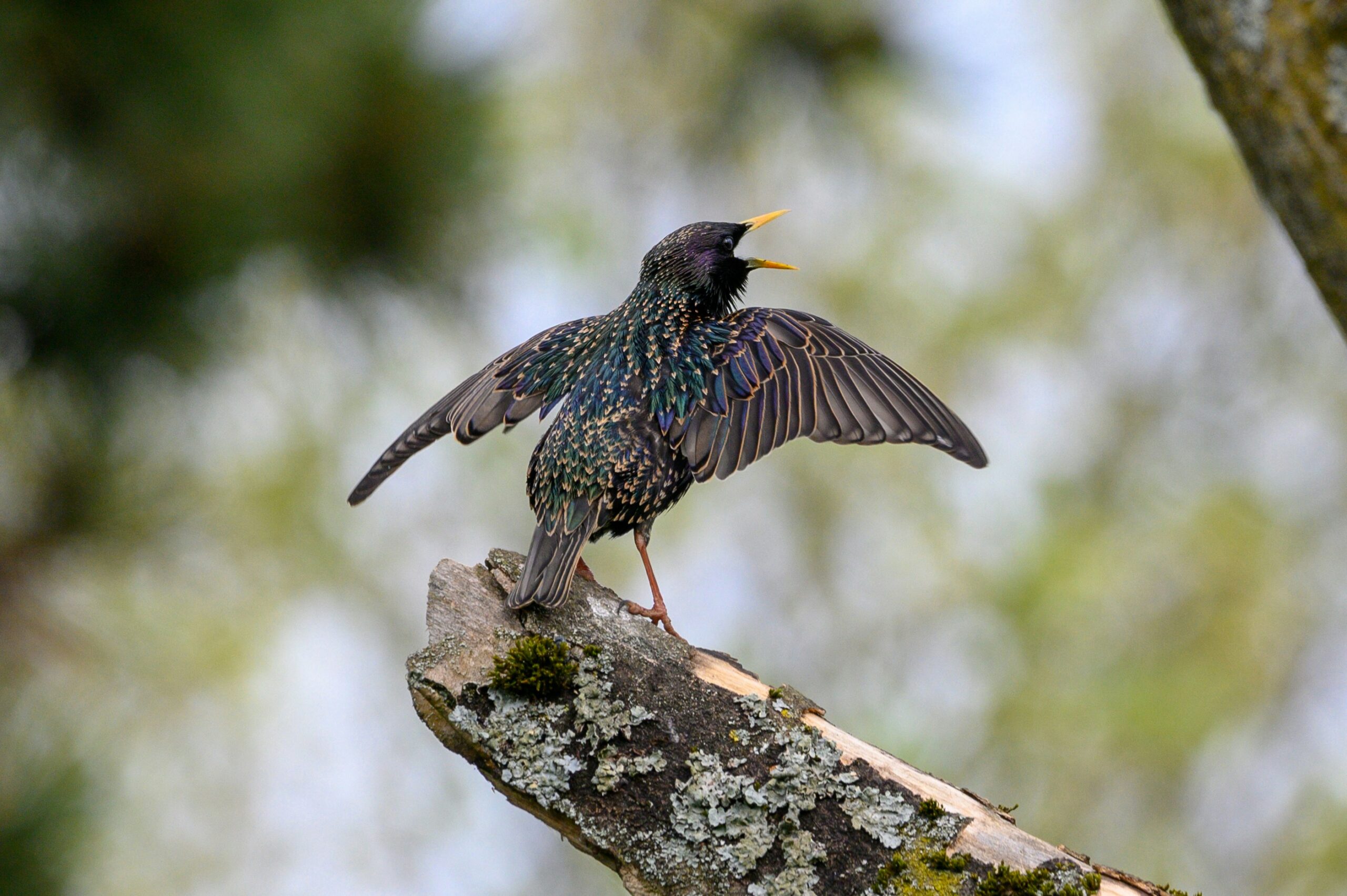Starlings have distinctive glossy black feathers with an iridescent green and purple sheen. From a distance they can look plain black. Photo: Photo by Phil Baum on Unsplash
A vigilant landowner found a breeding pair of starlings with their chicks in a vacant house on a Howick farm east of Esperance recently.
Starlings are aggressive birds and can form very large flocks that move, feed and roost together.
The common starling (Sturnus vulgaris) is one of the most invasive bird pests worldwide, having established populations in many countries outside its natural range.
DPIRD urged local landholders, community groups, agricultural producers, ranger groups and anyone who has eyes on the ground in regional areas, to report suspected starling sightings.
Starlings are small to medium sized birds.
They have distinctive glossy black feathers with an iridescent green and purple sheen. From a distance they can look plain black.

The pest may be seen perched on livestock or nesting in abandoned buildings, farm sheds, machinery and rubbish tips.
In the past, starlings established small populations near the towns of Munglinup and Condingup between 2006-2009 which were eradicated after a substantial control response.
Suspect bird sightings, particularly in the Hopetoun and Esperance areas, should be reported to the DPIRD’s Pest and Disease Information Service (08) 9368 3080 or email padis@dpird.wa.gov.au, or through the department’s MyPestGuide® Reporter app.
Videos and still images are welcome.




